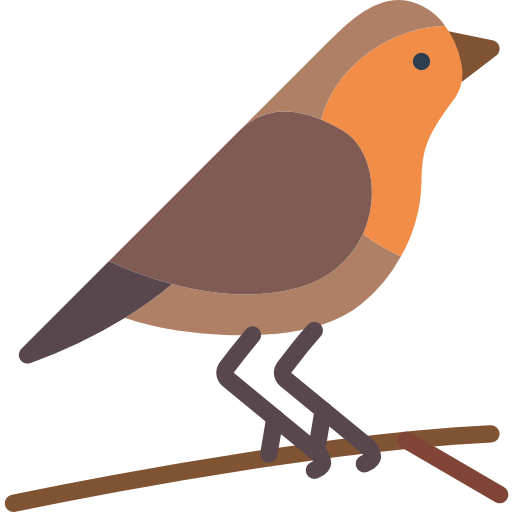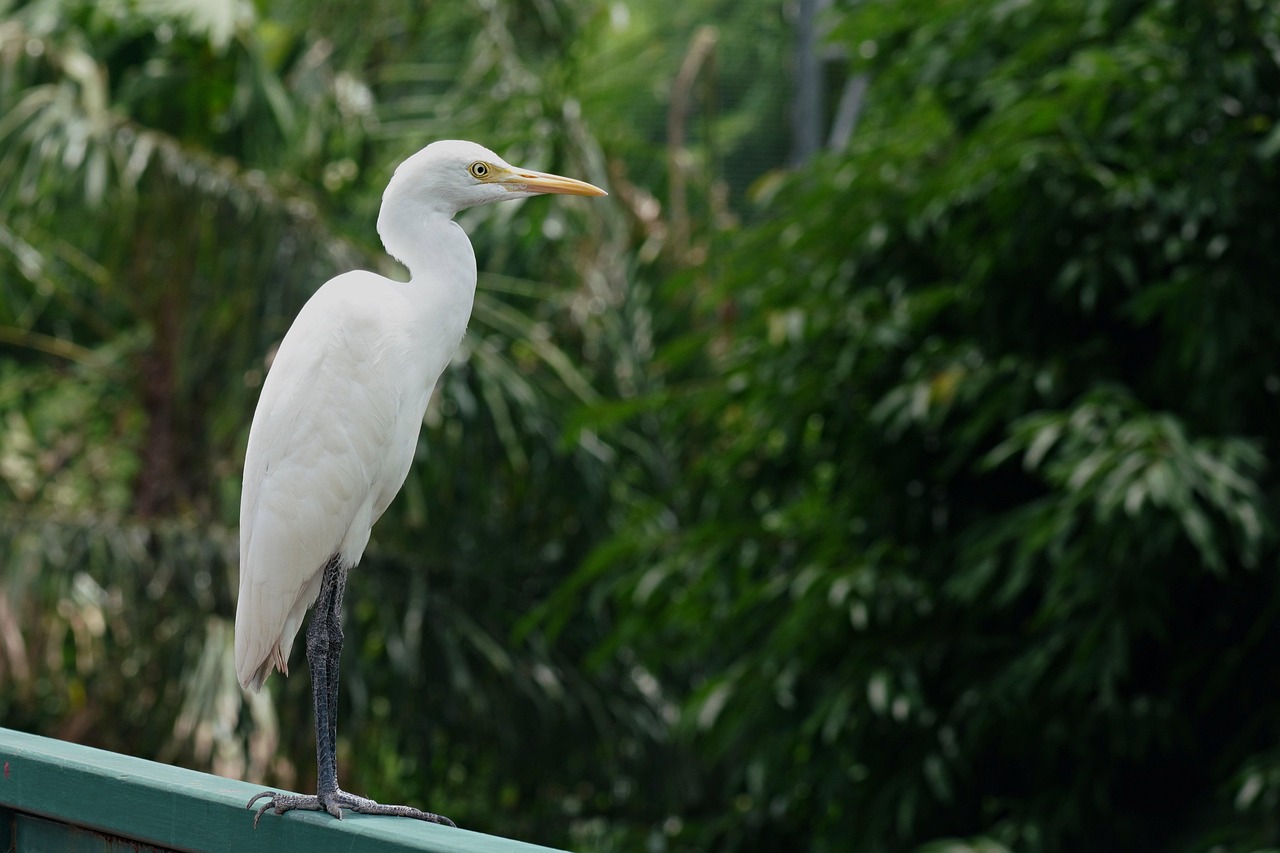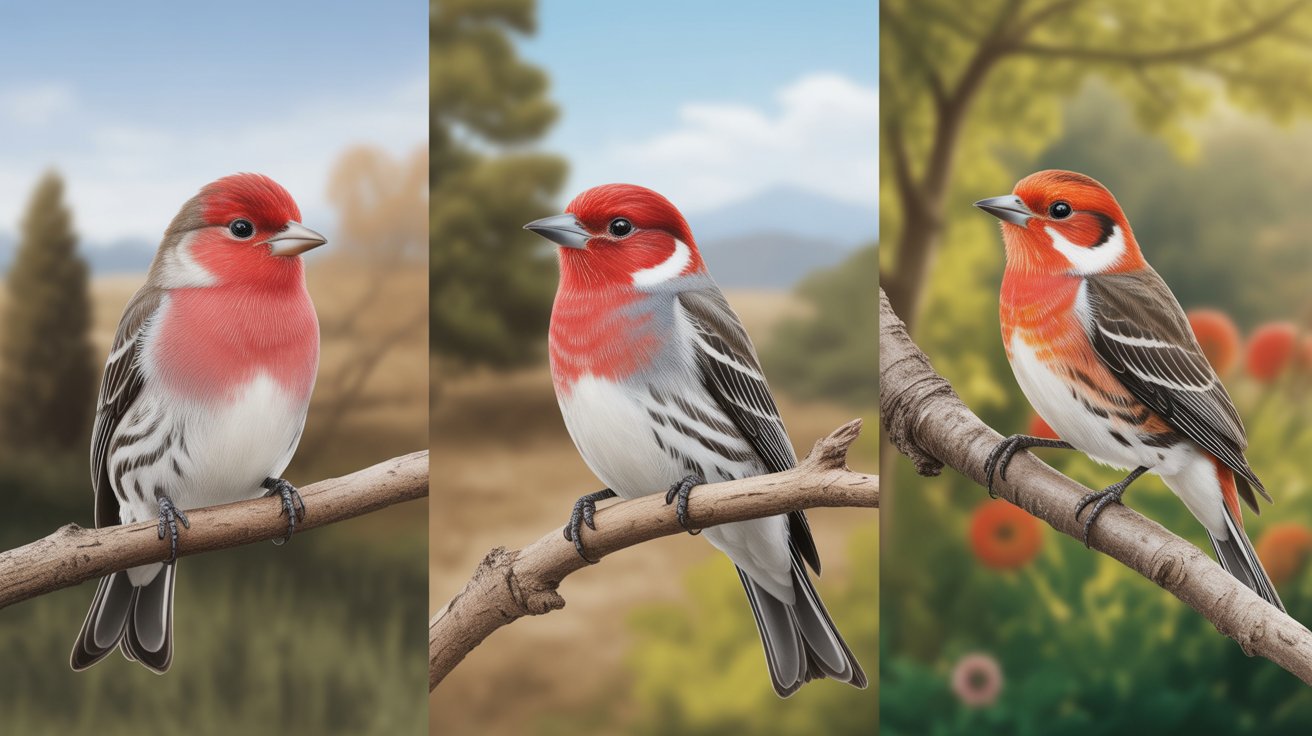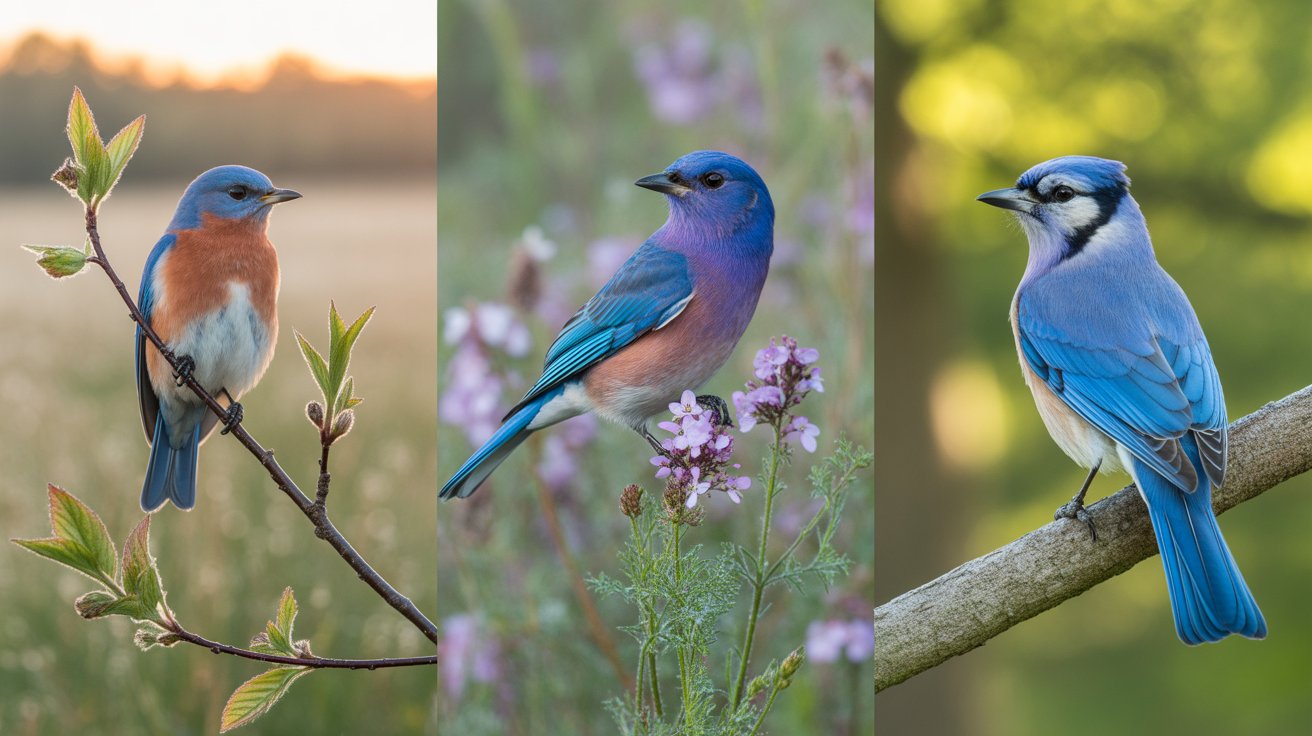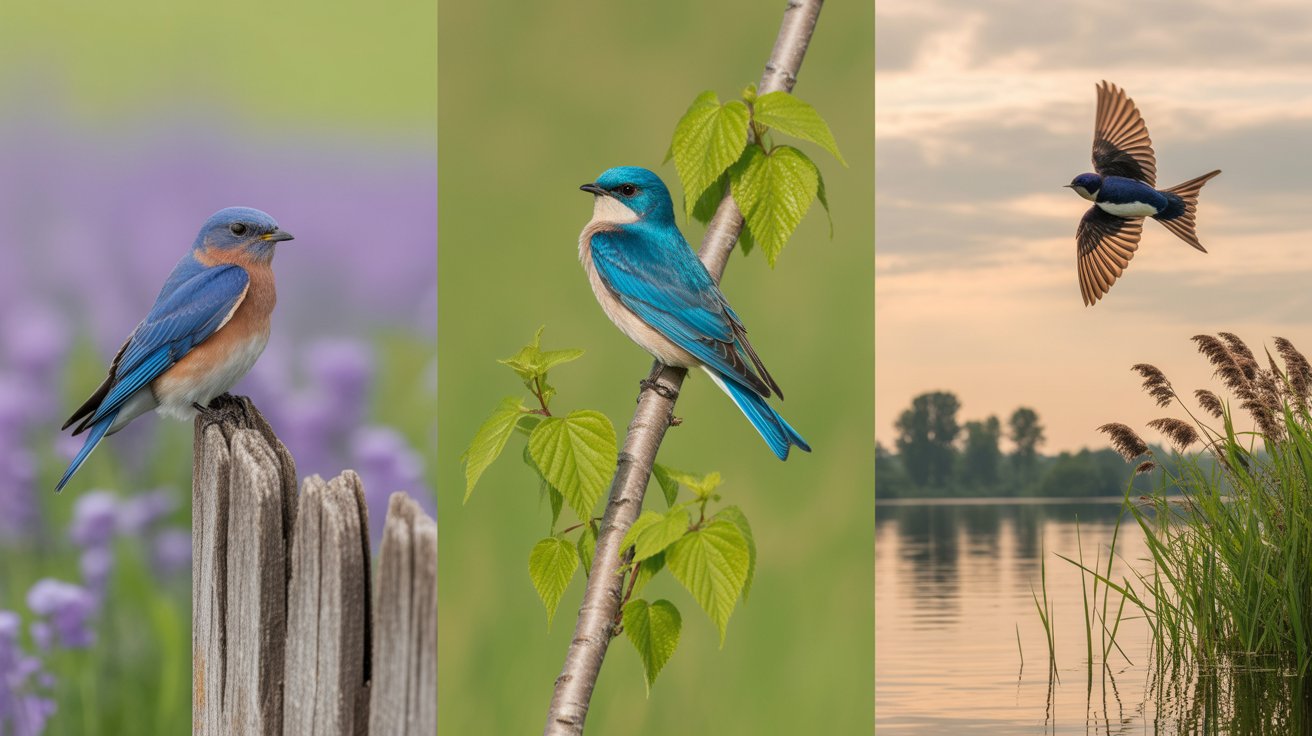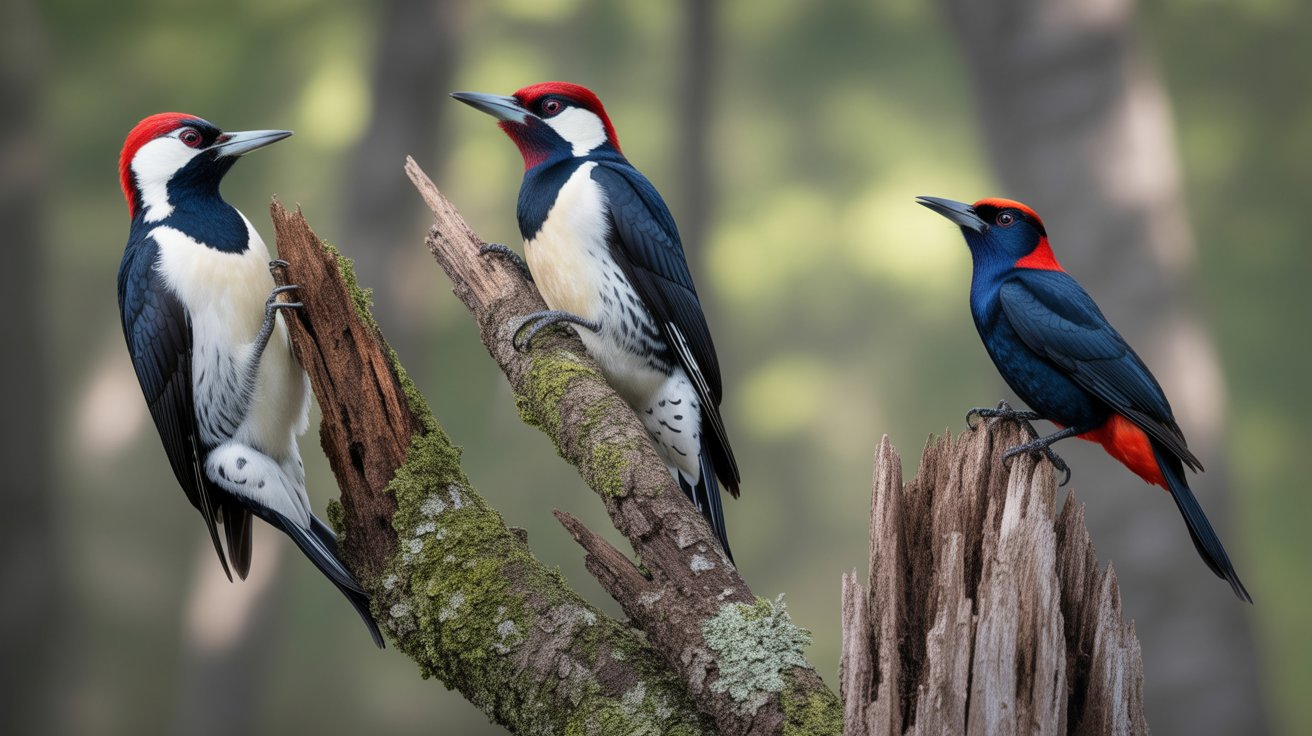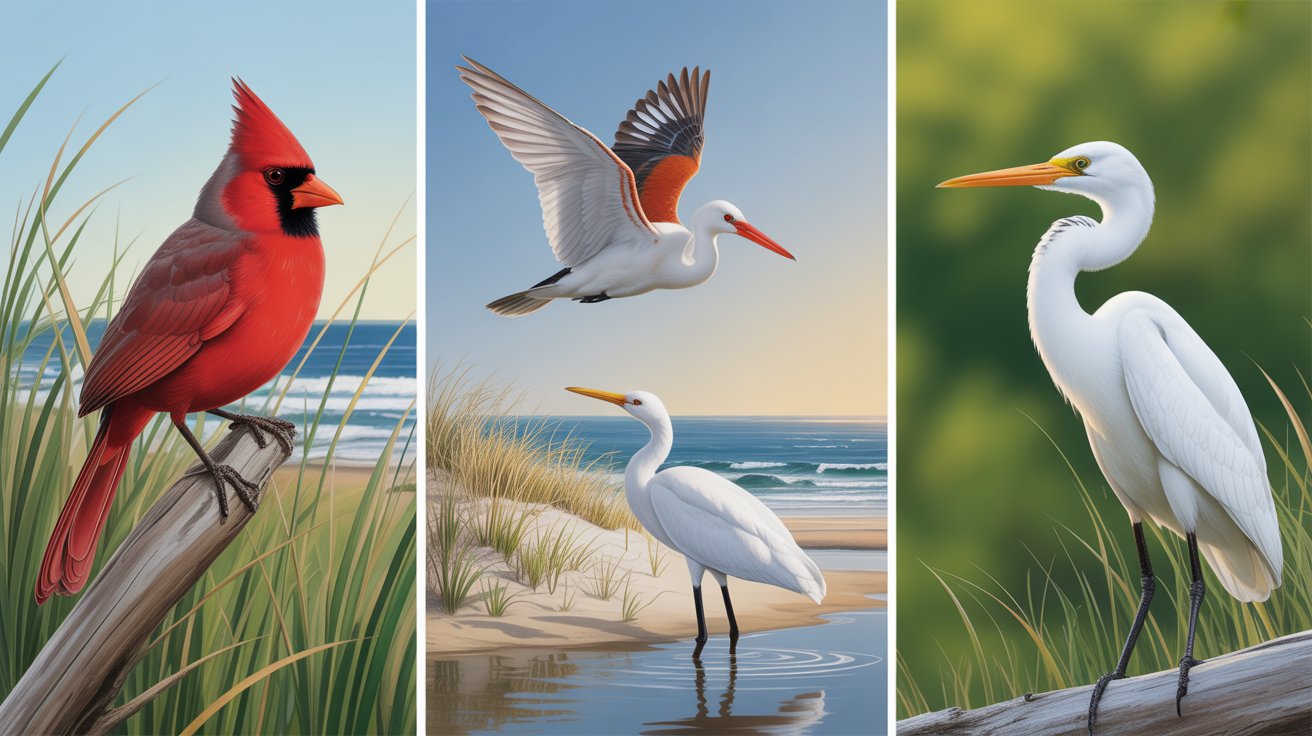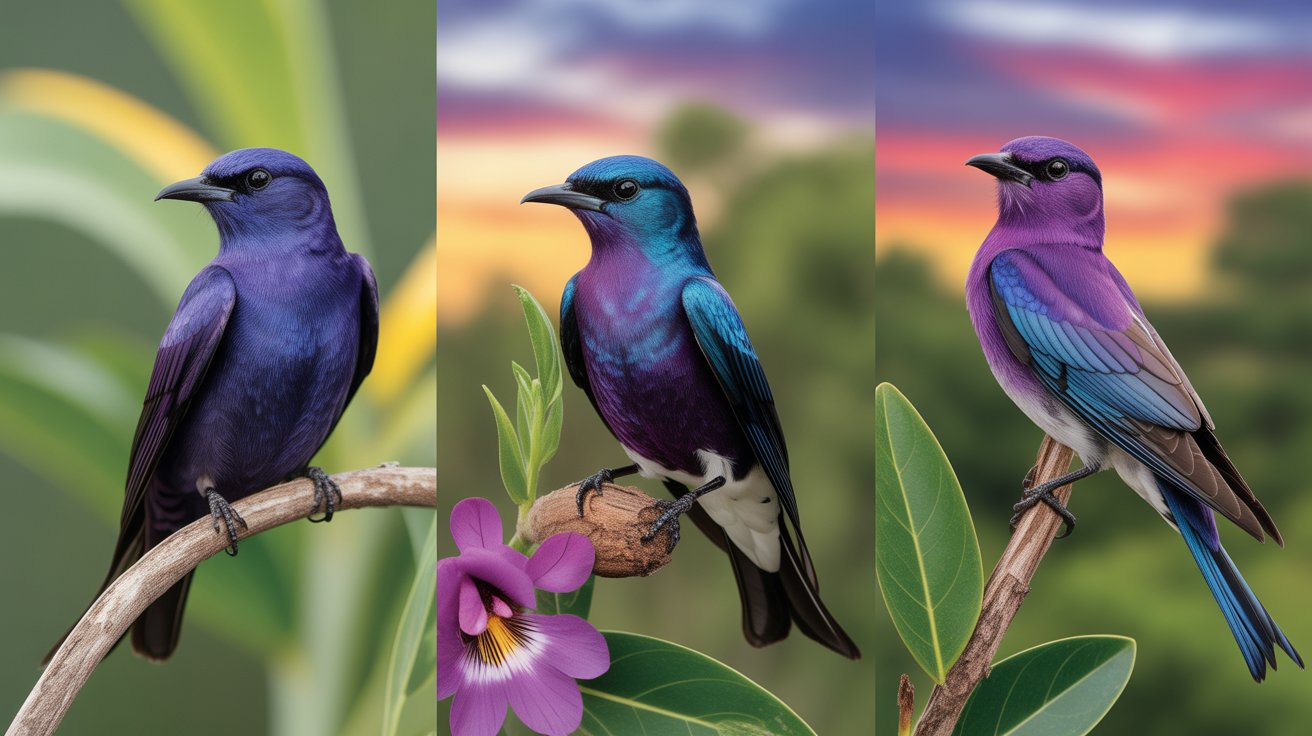Have you ever wondered just how many fascinating birds there are that start with the letter “C”?
You’re not alone!
Birds have always sparked our curiosity, and sorting them by name makes for an exciting journey into nature’s diversity.
Whether you’re a casual bird watcher, a nature enthusiast, or someone looking to expand your trivia knowledge, learning about birds that begin with “C” can be both entertaining and educational.
In this article, you’ll explore over 20 remarkable birds whose names all share this simple letter. But there’s nothing simple about the birds themselves.
From colorful plumage and unique behaviors to vast wingspans and rare habitats, each bird on this list carries its own story and set of characteristics.
Some might surprise you with their unexpected features, while others might inspire you to pick up binoculars and see them in person.
We’ve made this guide as reader-friendly as possible, breaking down information into short, scannable sections.
You’ll get quick facts like scientific names, wingspans, and typical habitats alongside engaging descriptions that bring these birds to life.
Let’s dive in—you’re about to discover a world where “C” stands for captivating!
Contents
- 20+ Birds That Start With C
- 1. Cattle Egret
- 2. Common Kingfisher
- 3. Crested Caracara
- 4. Cedar Waxwing
- 5. Common Chaffinch
- 6. Crowned Crane
- 7. California Condor
- 8. Cockatiel
- 9. Collared Dove
- 10. Curlew
- 11. Crimson Rosella
- 12. Corncrake
- 13. Cape Petrel
- 14. Chestnut Teal
- 15. Cirl Bunting
- 16. Crested Tit
- 17. Cinnamon Teal
- 18. Clark’s Nutcracker
- 19. Cuban Trogon
- 20. Common Redpoll
- 21. Canvasback
- FAQs
- Conclusion
20+ Birds That Start With C
1. Cattle Egret
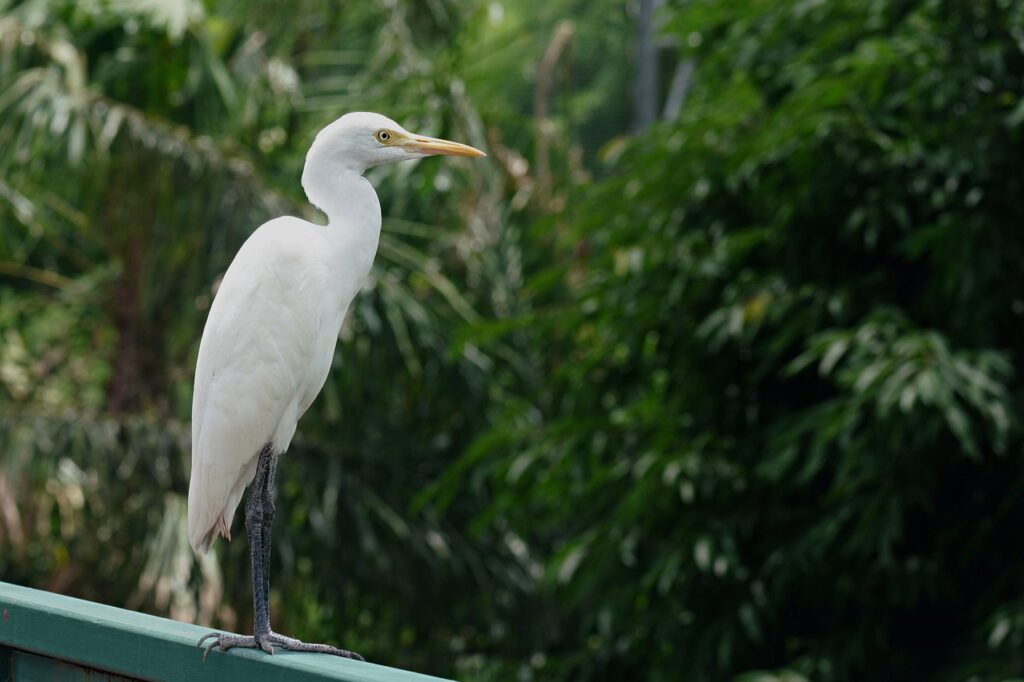
Often seen perched near grazing livestock, the Cattle Egret is a small heron that’s found across tropical, subtropical, and warm temperate zones.
- Scientific Name: Bubulcus ibis
- Wingspan: 88–96 cm (34–38 in)
- Length: 46–56 cm (18–22 in)
- Weight: 270–512 g (9.5–18 oz)
With its snowy white feathers and buff-colored plumes during breeding season, the Cattle Egret is unmistakable. You’ll usually spot them trailing behind cows, buffalo, or even tractors, snapping up insects stirred by their movement. This behavior has earned them their name and made them famous among bird lovers.
They’re adaptive and social, nesting in large colonies near water bodies. In flight, their neck appears pulled back, and they beat their wings steadily, making them quite graceful to watch. Despite their widespread presence, every sighting feels like catching nature in quiet collaboration.
2. Common Kingfisher
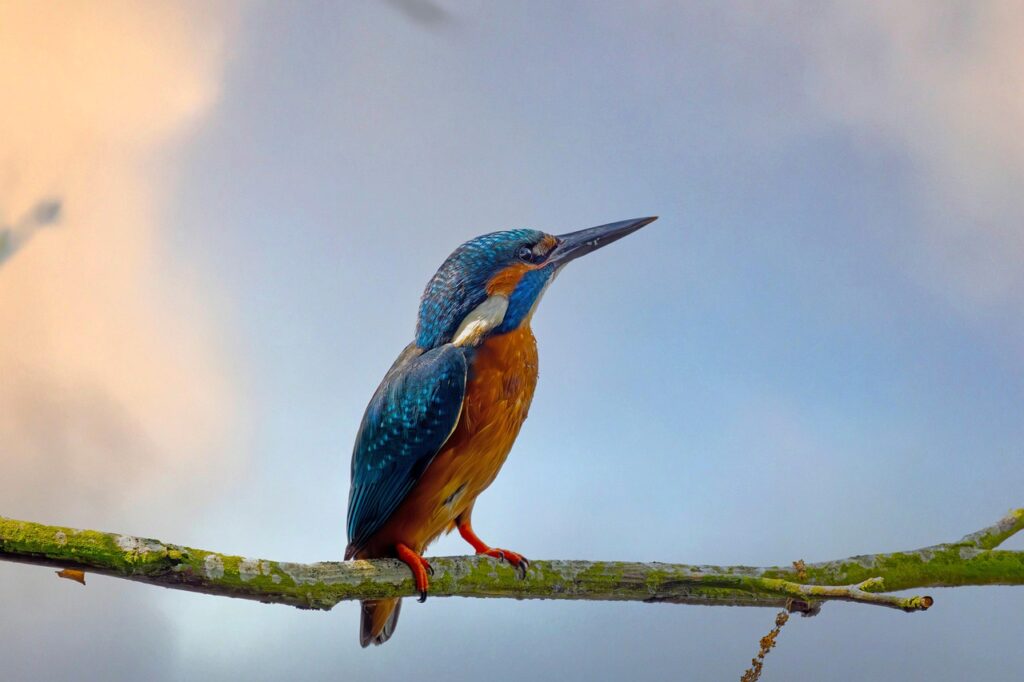
Small yet striking, the Common Kingfisher dazzles with its brilliant blue and orange plumage.
- Scientific Name: Alcedo atthis
- Wingspan: 24–26 cm (9.5–10 in)
- Length: 16–17 cm (6.3–6.7 in)
- Weight: 34–46 g (1.2–1.6 oz)
These birds prefer clean, slow-moving rivers where they can hover and dive for fish. Watching one plunge into water and emerge with its catch is a sight to remember. They build burrows in riverbanks for nesting, which keeps eggs and chicks safe from predators.
The Common Kingfisher’s vibrant coloring isn’t just for show—it also helps in courtship displays. When you see a flash of blue dart past, you’re likely witnessing this tiny hunter at work. They’re shy and sensitive to habitat disruption, so a healthy kingfisher population often indicates clean waterways.
3. Crested Caracara
Bold, curious, and powerful, the Crested Caracara is a raptor known for its striking appearance and scavenging habits.
- Scientific Name: Caracara plancus
- Wingspan: About 120–132 cm (47–52 in)
- Length: 50–65 cm (19–25 in)
- Weight: 1–1.6 kg (2.2–3.5 lbs)
They sport black caps on their heads, contrasting white necks, and reddish-orange faces that stand out against the plains and open woodlands of the Americas. Caracaras often walk on the ground more than they fly, giving them an unusual look among birds of prey.
They feed on carrion, insects, and small animals, sometimes stealing food from other birds. Intelligent and opportunistic, they’ve been spotted following fires or vehicles, hoping to snatch prey flushed out by the disturbance.
4. Cedar Waxwing
The Cedar Waxwing looks almost regal with its silky feathers and black eye mask.
- Scientific Name: Bombycilla cedrorum
- Wingspan: 22–30 cm (8.7–12 in)
- Length: 15–18 cm (5.9–7.1 in)
- Weight: 30–32 g (1.1 oz)
They’re social birds often seen in flocks, feasting on berries and small fruits. The name “waxwing” comes from the red, wax-like tips on their wing feathers—a detail you might only notice up close.
In breeding season, they can perform elaborate courtship feeding rituals, passing berries or petals back and forth. Their soft, high-pitched calls are as gentle as their appearance, and spotting a flock among berry trees is always a highlight for birders.
5. Common Chaffinch
Bright and melodic, the Common Chaffinch adds color and song to woodlands and gardens across Europe and western Asia.
- Scientific Name: Fringilla coelebs
- Wingspan: 24–28 cm (9.4–11 in)
- Length: 14–16 cm (5.5–6.3 in)
- Weight: 18–29 g (0.6–1 oz)
Males have rosy underparts and bluish-gray caps, while females display subtler tones. Chaffinches sing loud, cheerful tunes, which you might hear long before spotting them.
They feed mainly on seeds, but during the breeding season, they also hunt insects to feed their young. Their adaptability makes them common in parks, hedgerows, and even urban areas.
6. Crowned Crane
Graceful and eye-catching, the Crowned Crane truly lives up to its royal name.
- Scientific Name: Balearica regulorum
- Wingspan: Around 2 meters (6.6 ft)
- Length: 100–110 cm (39–43 in)
- Weight: 3.5–4 kg (7.7–8.8 lbs)
With a golden crown of stiff feathers atop their heads, these cranes are a symbol of elegance. Native to Africa’s wetlands and grasslands, they’re known for elaborate dances that involve leaping, bowing, and wing-fluttering.
Despite their beauty, Crowned Cranes face threats from habitat loss and capture for trade. Spotting them in the wild is a truly special experience, reminding us why conservation matters.
7. California Condor
The California Condor is North America’s largest flying bird and a true conservation success story.
- Scientific Name: Gymnogyps californianus
- Wingspan: 2.5–3 meters (8–10 ft)
- Length: 109–140 cm (43–55 in)
- Weight: 8–14 kg (17–31 lbs)
Once on the brink of extinction, this magnificent vulture now soars again over parts of California and Arizona thanks to dedicated recovery programs. With its vast wingspan and mostly black plumage accented by white patches under the wings, it’s an unforgettable sight against canyon cliffs.
These scavengers feed on large carcasses like deer or cattle remains. They play an essential role in cleaning up nature’s leftovers. California Condors have bald heads—an adaptation to keep clean while feeding. Seeing one gliding on warm updrafts is a bucket-list experience for many birders.
8. Cockatiel
Popular as a pet and admired in the wild, the Cockatiel is a small parrot known for its friendly demeanor and charming crest.
- Scientific Name: Nymphicus hollandicus
- Wingspan: 30–35 cm (12–14 in)
- Length: 30–33 cm (12–13 in)
- Weight: 70–120 g (2.5–4.2 oz)
Native to Australia’s open bushlands and grasslands, Cockatiels are easily recognized by their grey bodies, yellow faces, and orange cheek patches. Their expressive crests signal mood—upright when excited or flattened when relaxed.
In the wild, they gather in flocks to forage for seeds and grains. As pets, they’re playful, social, and capable of mimicking simple sounds or whistles, making them beloved companions worldwide.
9. Collared Dove
The Collared Dove is a gentle presence in towns, gardens, and countryside settings.
- Scientific Name: Streptopelia decaocto
- Wingspan: 47–55 cm (19–22 in)
- Length: 32 cm (12.5 in)
- Weight: 150–250 g (5–8.8 oz)
Light grey with a distinctive black ‘collar’ around the neck, they’re easy to identify. Their soft cooing is a familiar background sound in many neighborhoods.
Originally native to Asia and Europe, Collared Doves have rapidly expanded their range to North America and beyond. They feed mainly on seeds and grains and often visit bird feeders. Their calm nature and adaptability help them thrive close to humans.
10. Curlew
With its long, downward-curved bill, the Curlew is an iconic wader of wetlands and coastal mudflats.
- Scientific Name: Numenius arquata
- Wingspan: 89–106 cm (35–42 in)
- Length: 50–60 cm (20–24 in)
- Weight: 770–1,000 g (1.7–2.2 lbs)
Europe’s largest wading bird, the Eurasian Curlew uses its unique bill to probe deep mud for worms and invertebrates. They’re easily identified by their haunting, bubbling calls echoing across moors and estuaries.
Sadly, Curlew numbers are declining due to habitat loss, making conservation efforts crucial. Watching one in its marshy home is always a peaceful moment in nature.
11. Crimson Rosella
Bright, bold, and beautiful, the Crimson Rosella lights up Australia’s forests.
- Scientific Name: Platycercus elegans
- Wingspan: 30–36 cm (12–14 in)
- Length: 32–36 cm (12–14 in)
- Weight: 120–150 g (4.2–5.3 oz)
With its brilliant scarlet plumage, blue cheeks, and shoulders, this parrot is a favorite among bird watchers and photographers. They feed on seeds, fruits, and blossoms and are often seen flitting through eucalyptus woodlands.
They’re relatively tame, frequently visiting garden feeders or picnic areas where they might cheekily share your snack.
12. Corncrake
The elusive Corncrake is more often heard than seen, known for its rasping, repetitive call.
- Scientific Name: Crex crex
- Wingspan: 46–53 cm (18–21 in)
- Length: 27–30 cm (10.6–12 in)
- Weight: 140–200 g (5–7 oz)
This shy bird hides in tall grasslands and meadows across Europe and Asia. It’s a master of camouflage, slipping away unseen if disturbed.
Conservationists work to protect its breeding habitats since modern farming practices have reduced suitable nesting sites. Hearing the Corncrake’s crek-crek call on a summer night is a timeless sound of the countryside.
13. Cape Petrel
Sailing the southern oceans, the Cape Petrel is one of the most striking seabirds you’ll see near Antarctic waters.
- Scientific Name: Daption capense
- Wingspan: 86–94 cm (34–37 in)
- Length: 35–40 cm (14–16 in)
- Weight: 400–500 g (14–18 oz)
These birds have a distinctive black-and-white checkered pattern on their wings and back. They follow ships and are often seen gliding effortlessly above waves in search of fish, squid, or krill.
Cape Petrels nest on cliffs and rocky islands, braving some of the harshest conditions on Earth. Watching them ride the wind is an unforgettable sight for any polar traveler.
14. Chestnut Teal
Found mainly in southern Australia, the Chestnut Teal is a dabbling duck with handsome plumage.
- Scientific Name: Anas castanea
- Wingspan: 63–75 cm (25–30 in)
- Length: 40–50 cm (16–20 in)
- Weight: 500–700 g (1.1–1.5 lbs)
Males have a rich chestnut body with a glossy green head, while females are mottled brown. They favor coastal wetlands, estuaries, and lagoons, feeding on aquatic plants and invertebrates.
Their quiet, calm presence makes them a treat to observe in tranquil marshes or nature reserves.
15. Cirl Bunting
A special sight in parts of Europe, the Cirl Bunting is a small songbird with striking colors.
- Scientific Name: Emberiza cirlus
- Wingspan: 22–25 cm (8.7–9.8 in)
- Length: 16 cm (6.3 in)
- Weight: 20–25 g (0.7–0.9 oz)
Males sport black-and-yellow striped heads with olive-green backs. These birds love open farmland with hedgerows, where they hunt insects and seeds.
Once rare in Britain, careful habitat management has helped Cirl Buntings make a comeback in certain coastal counties.
16. Crested Tit
The Crested Tit is a woodland delight, instantly recognized by its spiky crest.
- Scientific Name: Lophophanes cristatus
- Wingspan: 17–21 cm (6.7–8.3 in)
- Length: 11–12 cm (4.3–4.7 in)
- Weight: 9–13 g (0.3–0.5 oz)
These small songbirds live in coniferous forests across Europe. Their black-and-white head pattern, punk-like crest, and restless movements make them a joy to watch as they forage for insects, seeds, and spiders among pine needles.
17. Cinnamon Teal
A splash of color in western North America’s wetlands, the Cinnamon Teal is easy to spot.
- Scientific Name: Spatula cyanoptera
- Wingspan: 58–62 cm (23–24 in)
- Length: 36–41 cm (14–16 in)
- Weight: 300–430 g (10–15 oz)
Breeding males show off deep reddish plumage, while females blend into reeds with mottled brown feathers. They forage in shallow ponds and marshes, dabbling for aquatic plants and insects.
18. Clark’s Nutcracker
High in North America’s mountain ranges, the clever Clark’s Nutcracker thrives.
- Scientific Name: Nucifraga columbiana
- Wingspan: 45–53 cm (18–21 in)
- Length: 30–34 cm (12–13 in)
- Weight: 120–145 g (4.2–5.1 oz)
This resourceful corvid stores pine seeds for winter, helping forests regenerate. They have pale gray bodies, black wings, and a dagger-like bill perfect for prying open pine cones.
19. Cuban Trogon
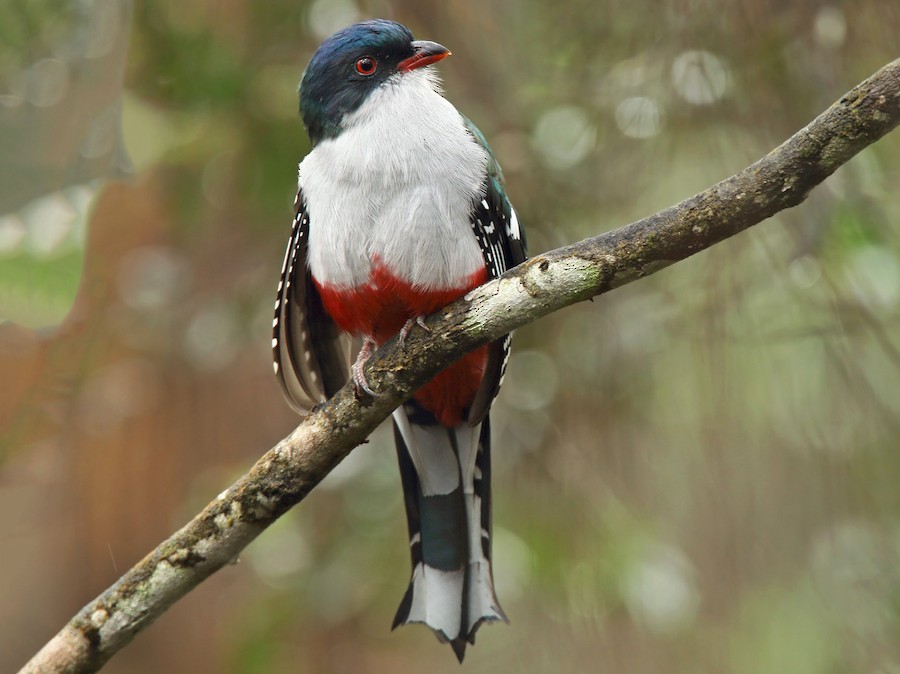
The national bird of Cuba, the Cuban Trogon, is a true tropical gem.
- Scientific Name: Priotelus temnurus
- Wingspan: Around 40–50 cm (16–20 in)
- Length: 23–28 cm (9–11 in)
- Weight: 50–60 g (1.8–2.1 oz)
This bird dazzles with red, white, and green plumage that mirrors Cuba’s flag colors. Its serrated tail feathers and soft calls make it a favorite for bird watchers visiting the island’s forests.
20. Common Redpoll
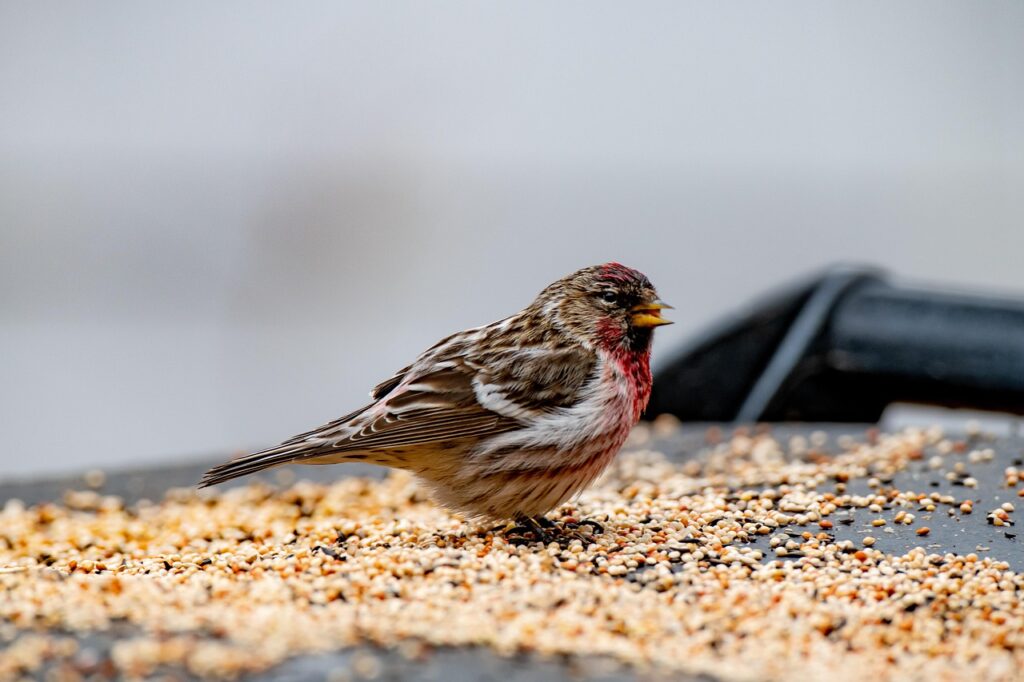
The hardy Common Redpoll thrives in cold, snowy landscapes.
- Scientific Name: Acanthis flammea
- Wingspan: 20–25 cm (7.9–9.8 in)
- Length: 12–14 cm (4.7–5.5 in)
- Weight: 12–16 g (0.4–0.6 oz)
These small finches sport red foreheads and black chins. They feed mainly on birch seeds and visit feeders in flocks during winter months, delighting backyard birders.
21. Canvasback
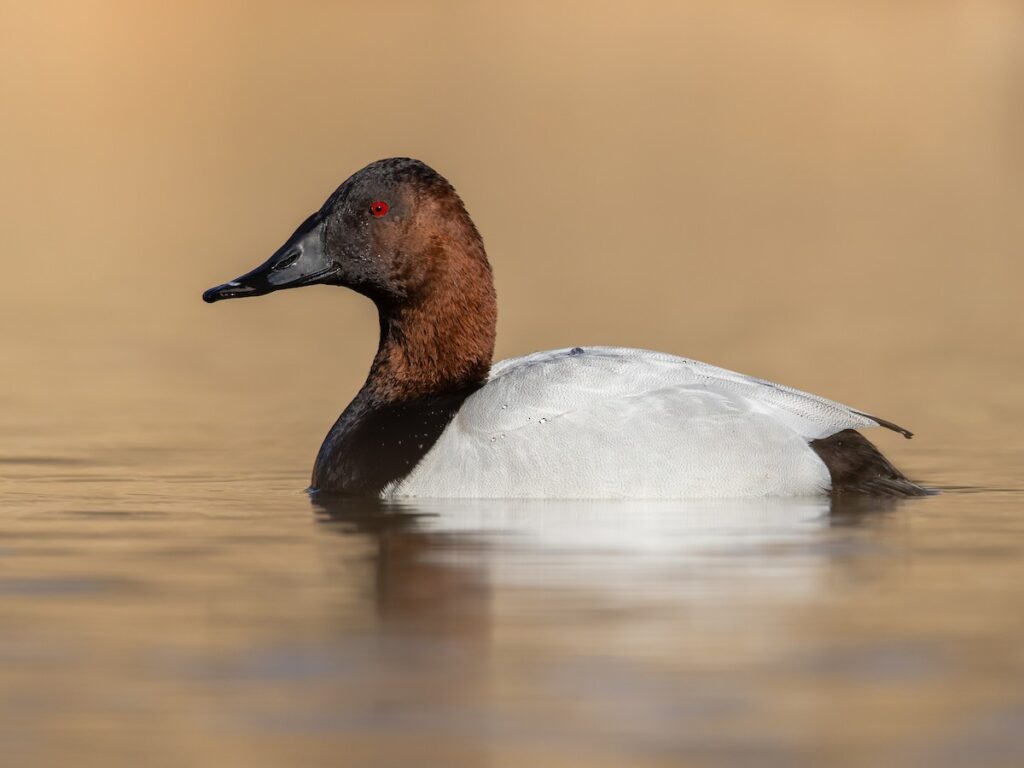
Elegant and sleek, the Canvasback is a diving duck found across North America.
- Scientific Name: Aythya valisineria
- Wingspan: 79–89 cm (31–35 in)
- Length: 48–56 cm (19–22 in)
- Weight: 862–1,588 g (1.9–3.5 lbs)
Males have striking reddish heads and sloped foreheads, while females are a subtle brown. They dive for aquatic plants, crustaceans, and insects in lakes and ponds.
FAQs
1. Why do so many bird names start with C?
Bird names often reflect features like color (Crimson Rosella), call (Curlew), or habitat (Cedar Waxwing). “C” happens to describe several traits or regions.
2. Which of these birds is the largest?
The California Condor, with a wingspan of about 2.9 meters (9.5 ft), is the largest on this list.
3. Are any of these birds endangered?
Yes. For example, the California Condor is critically endangered despite ongoing conservation efforts.
4. Can I see these birds in my backyard?
Some, like the Common Chaffinch or Collared Dove, visit gardens and parks, while others need special habitats.
5. Which bird is known for dancing?
The Crowned Crane is famous for its courtship dances that include leaps and wing displays.
Conclusion
Birds whose names start with “C” offer an extraordinary glimpse into nature’s creativity. From tiny kingfishers to massive condors, each bird carries unique colors, behaviors, and roles in its ecosystem. Whether you’re discovering them from home or in the wild, these birds enrich our understanding of biodiversity and inspire us to protect natural habitats. We hope this guide sparks your curiosity and encourages you to keep exploring the world of birds, one letter at a time.
